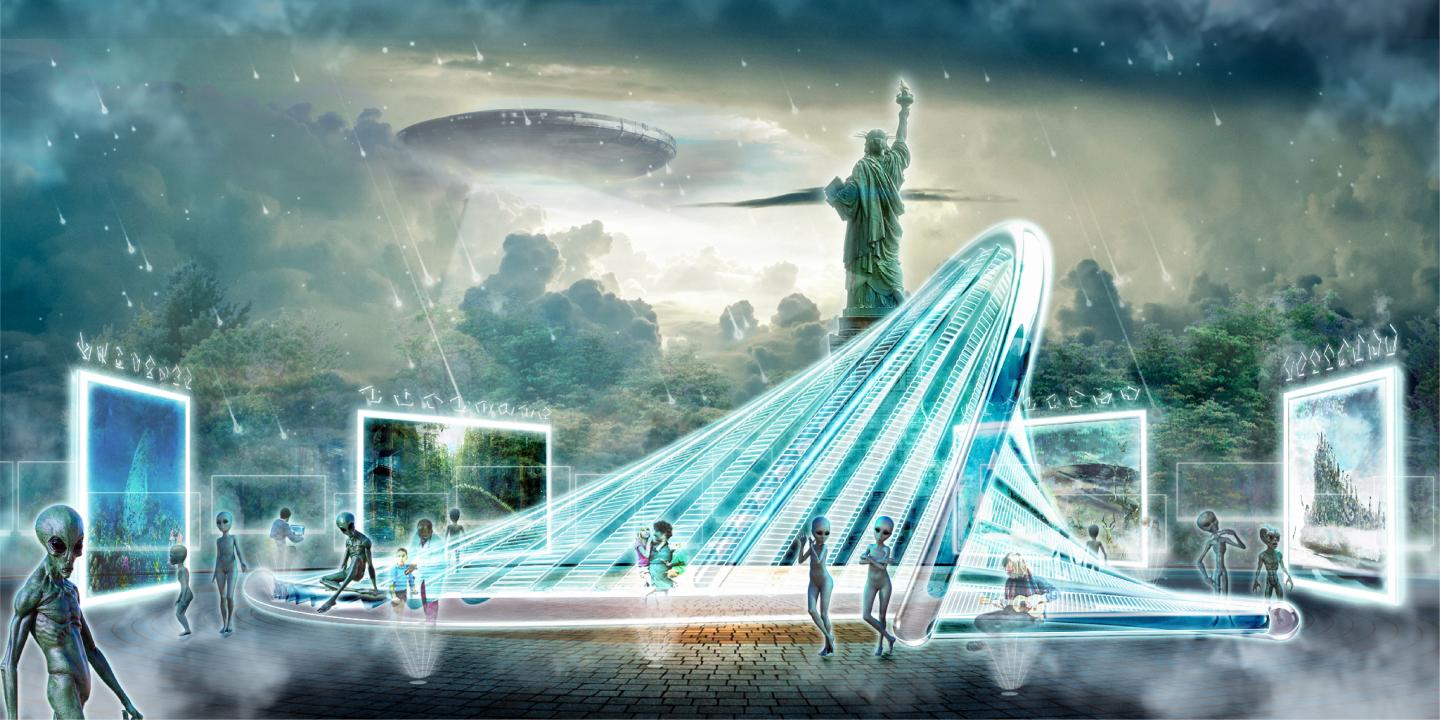Endangered Earth and Our Achievements
From global warming, energy shortages, to the current Covid-19 pandemic, we humans seem to be one step closer
to the sixth mass extinction (the mass extinction event caused by human activities). According to the Global
Catastrophic Risk Conference held at Oxford University in 2008, experts pointed out that the probability of human
extinction is as high as 19% by 2100(Sandberg, 2008).
In the book "The Origin of Species," Darwin believes that natural selection is the driving force of biological evolution.
Individuals who adapt to the environment will survive, and those who do not adapt will be eliminated(Darwin &
Darwin, 1964). However, "Adaptation and Natural Selection" by George C. Williams and "The Selfish Gene" by
Richard Dawkins gave this cold evolutionary theory some desired temperature. Base on natural selection, they
believe that evolution is the gene-centered(Williams, 2018), and species with similar genes will produce altruistic
behavior, which includes sacrifice and dedication(Dawkins, 2016). With the expansion of research, Lynn Margulis's
"Origin of Eukaryotic Cells" completely changed the coldness of evolution theory. Her research pointed out that
prokaryotes co-exist in eukaryotic cells through cooperation. This "cooperation and symbiosis" model may be the
driving force of evolution(Margulis, 1970), which is contrary to the "competition" view of Darwin and Neo-Darwinism.
So far, we have found the idea we want to express for this competition, that is, Cooperation and Symbiosis. We
believe that the discovery of DNA is one of the most outstanding achievements in human history. Because it intuitively
presents the essentiality (genetic information of individuals) and similarity (the double helix structure of genes) of
living things on earth. Facing an uncertain future, biologists and geneticists seem to give us the clues we want. That is,
only by cooperating can we avoid tragedies. And this effort is not only between humans but also a harmonious
symbiosis between humans and all living things.
2020
2020
Design solution
We don't know where the aliens will visit the earth, so we choose five representative locations on the planet, and
combined our conception of "cooperation" and "symbiosis" to carry out an open design. In this design, we mainly
focus on the following two aspects:
1. Representativeness
We try to find the most representative symbol to show all the creatures on the earth. We hope that this symbol is the
architectural form itself, so even if humans are extinct, this symbol will still be preserved for a long time, to show the
evidence that we (including all living things) existed. Therefore, we decided to adopt the double helix structure as
the main structural form of the building, implying the basic structure of the genetic genes of the current earth
creatures.
2. Positiveness
Studies have shown that 10,000 years ago, vertebrates on land accounted for 1% of humans and 99% of wild
animals. Today, only 1% of wild animals remain, and the rest are humans and domestic animals(Welcome to the
Anthropocene, 2018). Obviously, human activities occupy too much living space for wild animals, and the
disappearance of habitat is the main reason for the sharp decline in the number of wild animals(Natural and Human
Impacts on Wildlife - NatureWorks, n.d.). We believe that "Symbiosis" is the key to solving the problem. Our design
divides the building structure into two parts. One part is long-lasting building materials (such as High-strength
recycled plastic, stainless steel powder (3D printing material), sand, water, ice), which serves as the main structure of
the building (double helix structure) to support the building space and achieve long-term preservation. The other part
is degradable environmental protection materials (such as cornstarch (3D printing material), resin, local wood,
straw rope), which provide separation for human activities in the early stage of the building life cycle. And it will be
removed from the building through biodegradation in the later stage of the building life cycle. At that time, the
building will completely provide shelter for wild animals. We recommend that all materials are come from locally to
achieve the best strategy for sustainable design.
In short, we redefine the meaning of "temporary structure" in this design. That is, "the first contact" for us humans is
a temporary structure designed for human activities. But when it completes the first phase of its mission, "the
first contact" will be a long-term shelter for local flora and fauna. This is our design concept of "cooperation and
symbiosis."
Washington State University student participant




